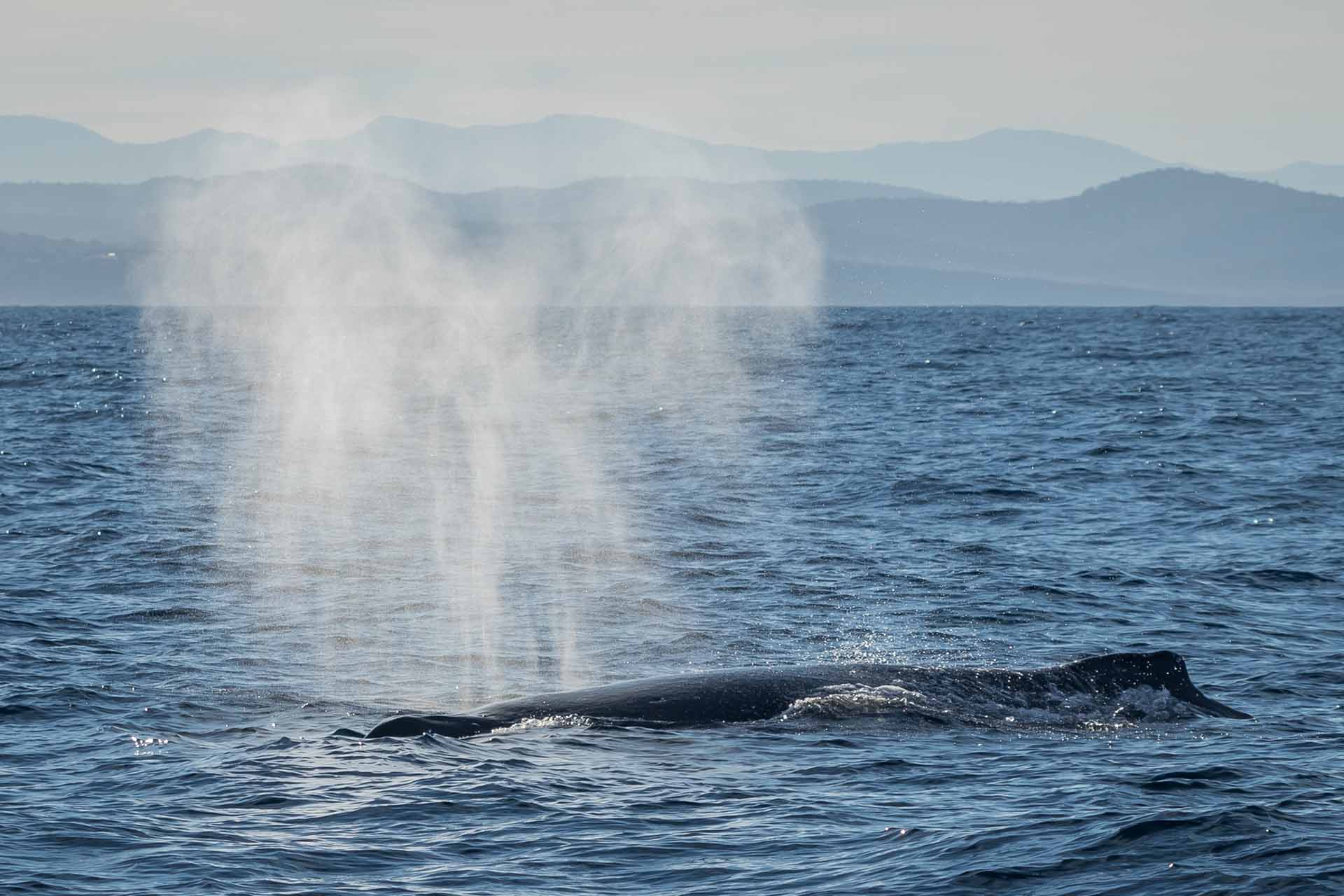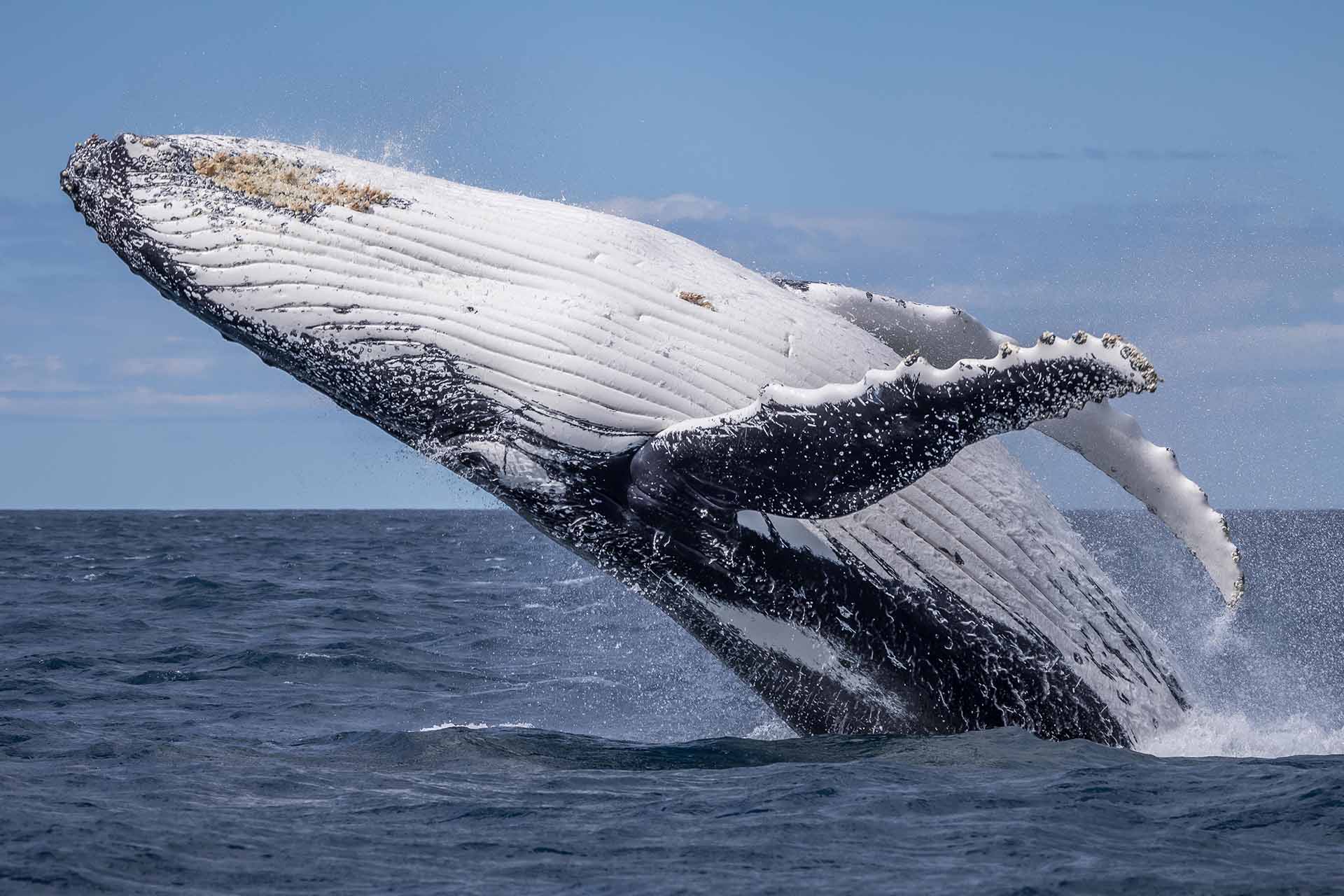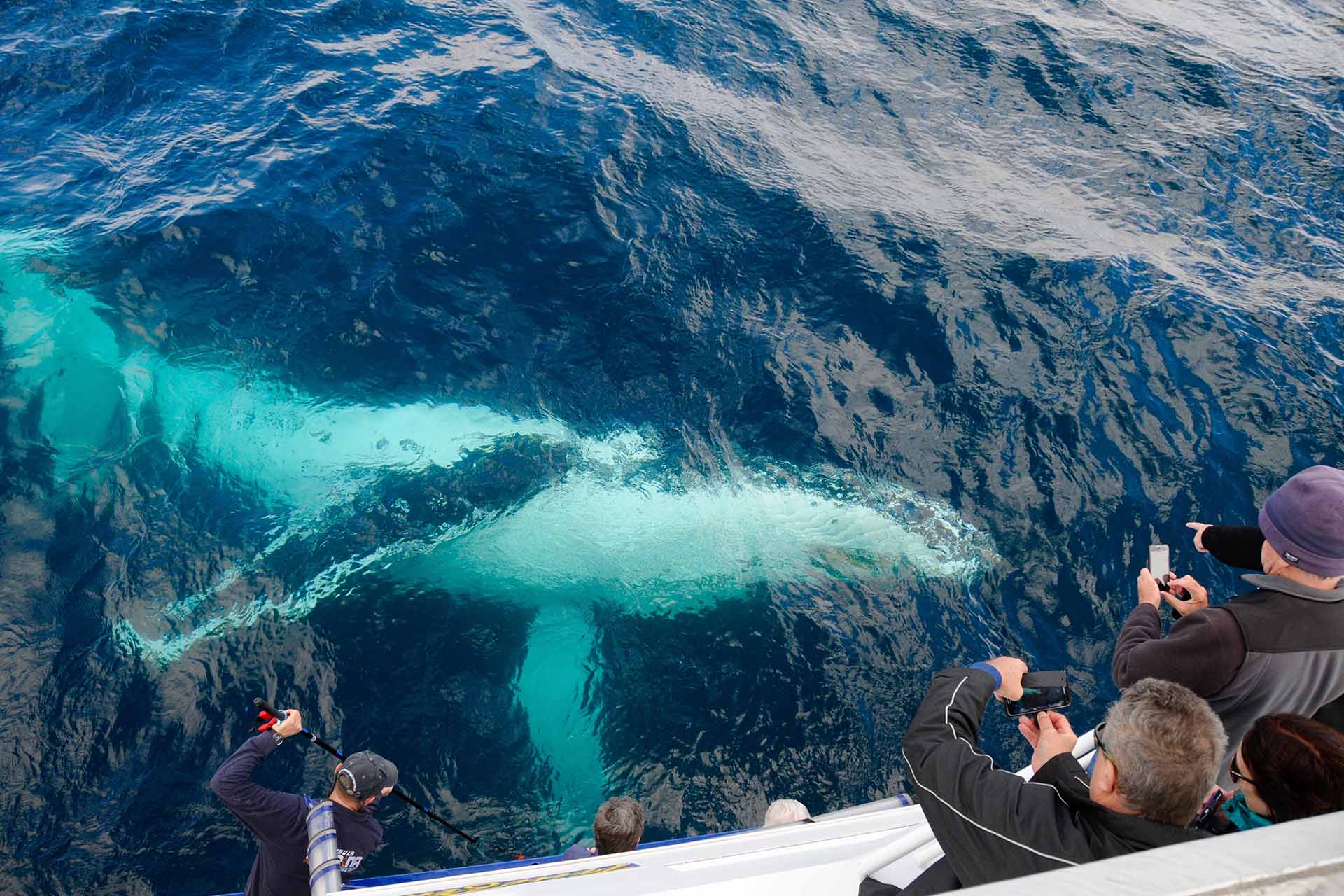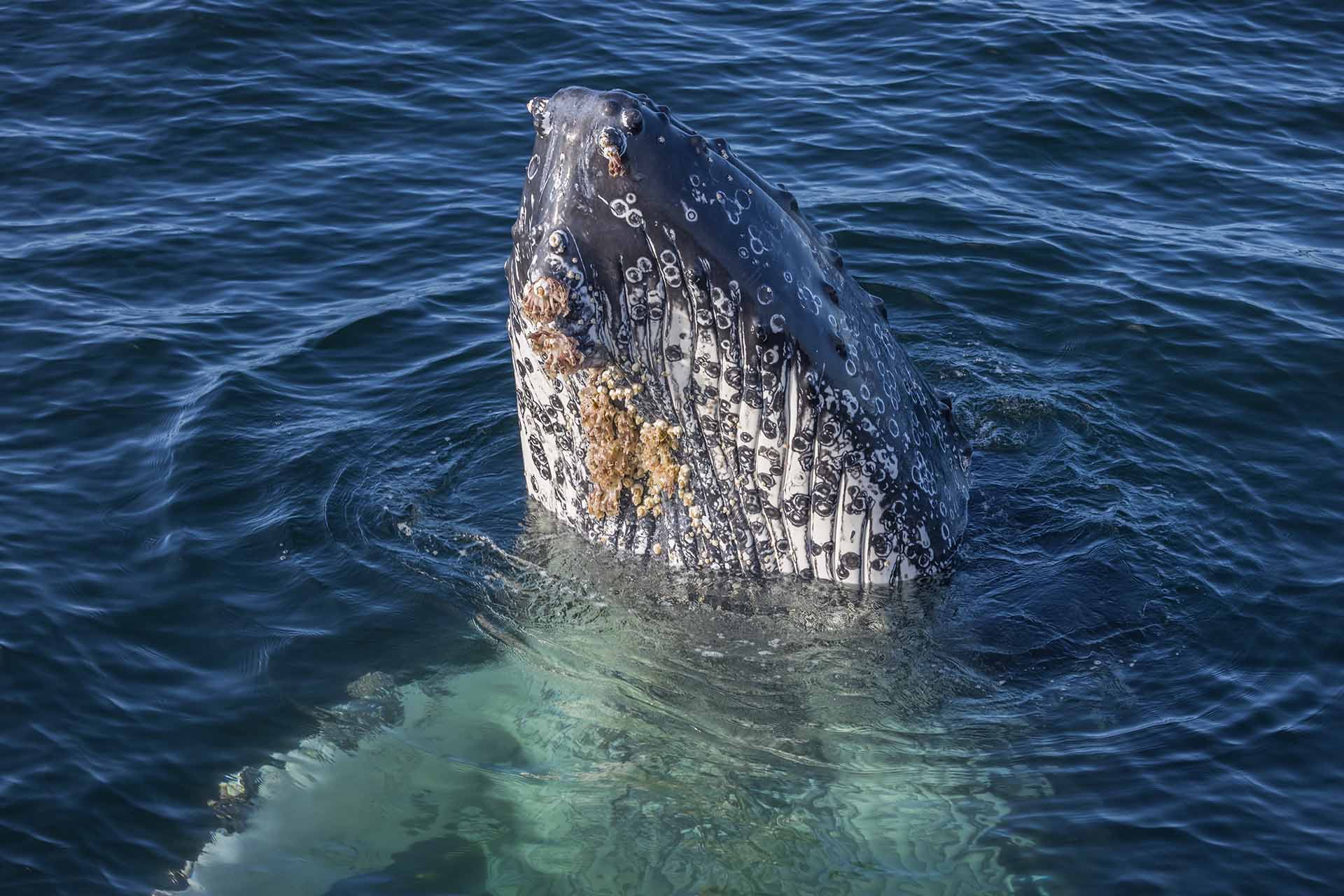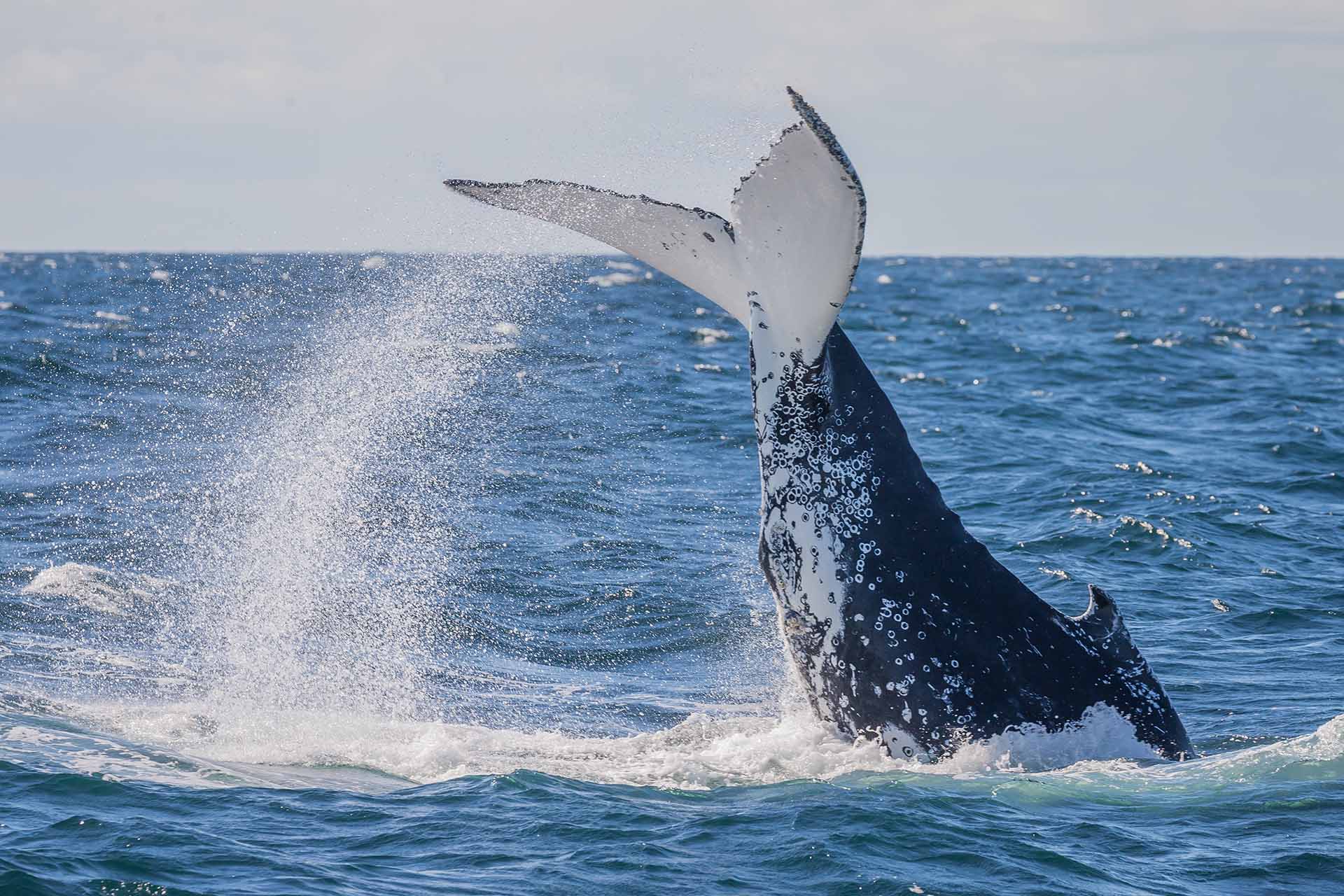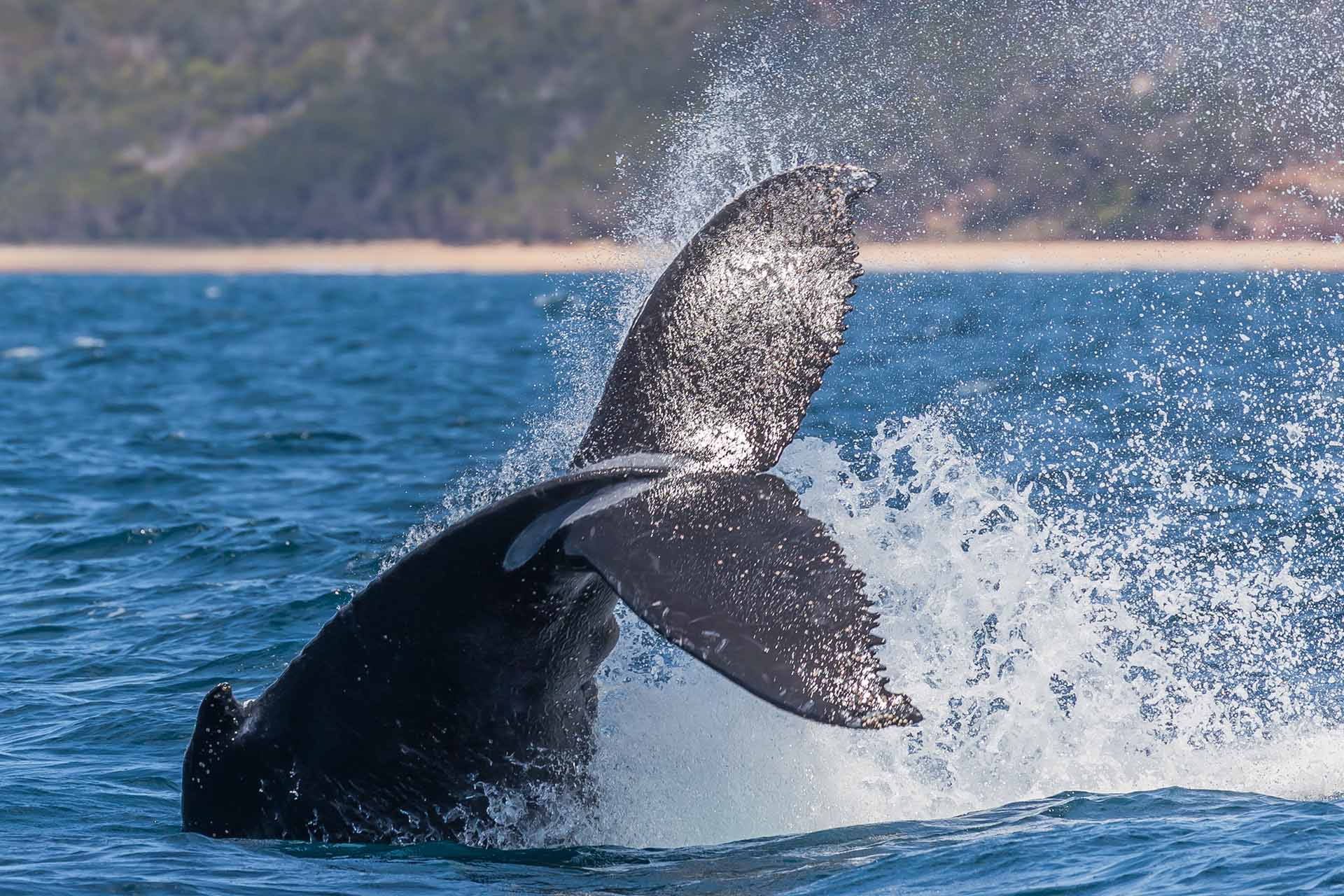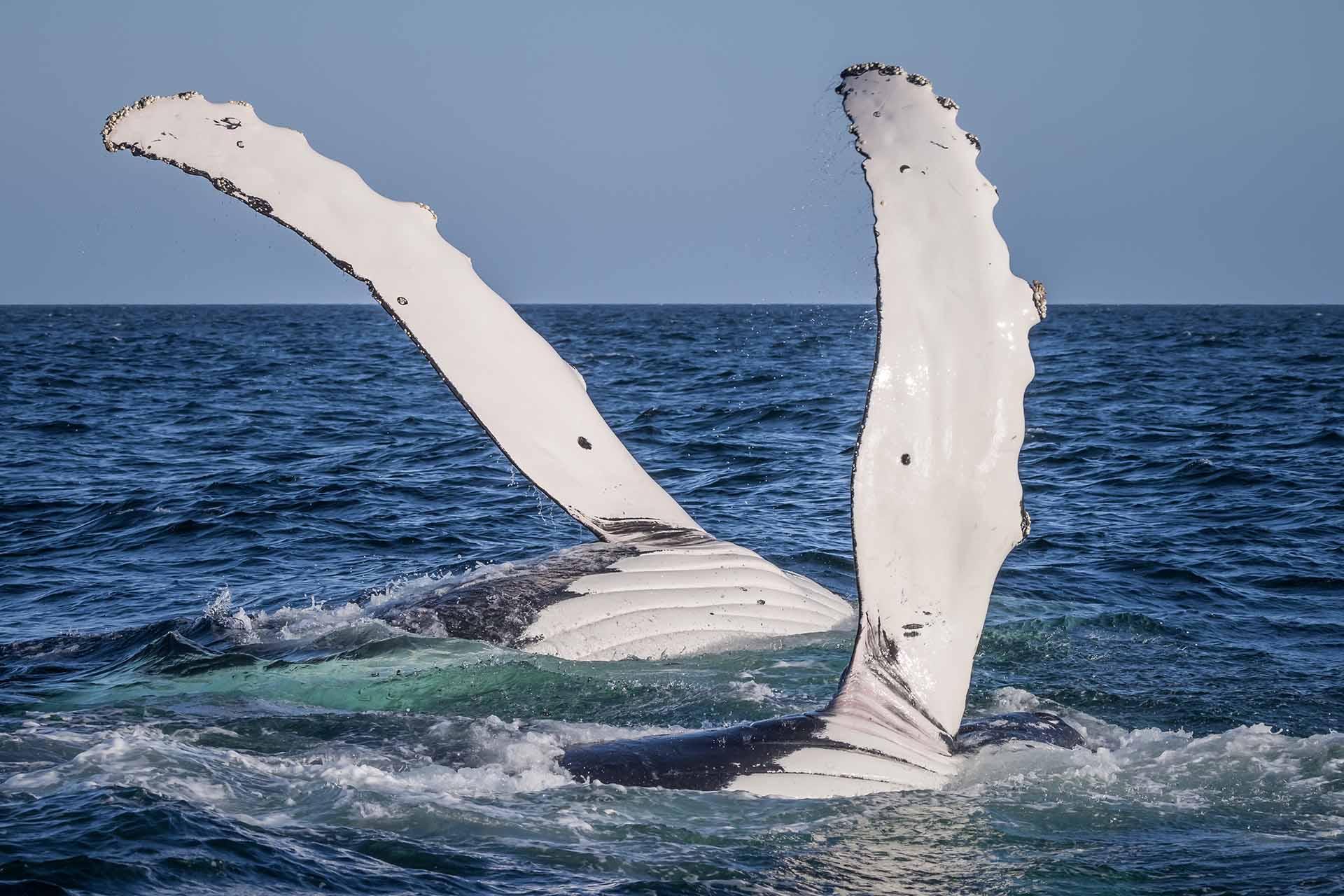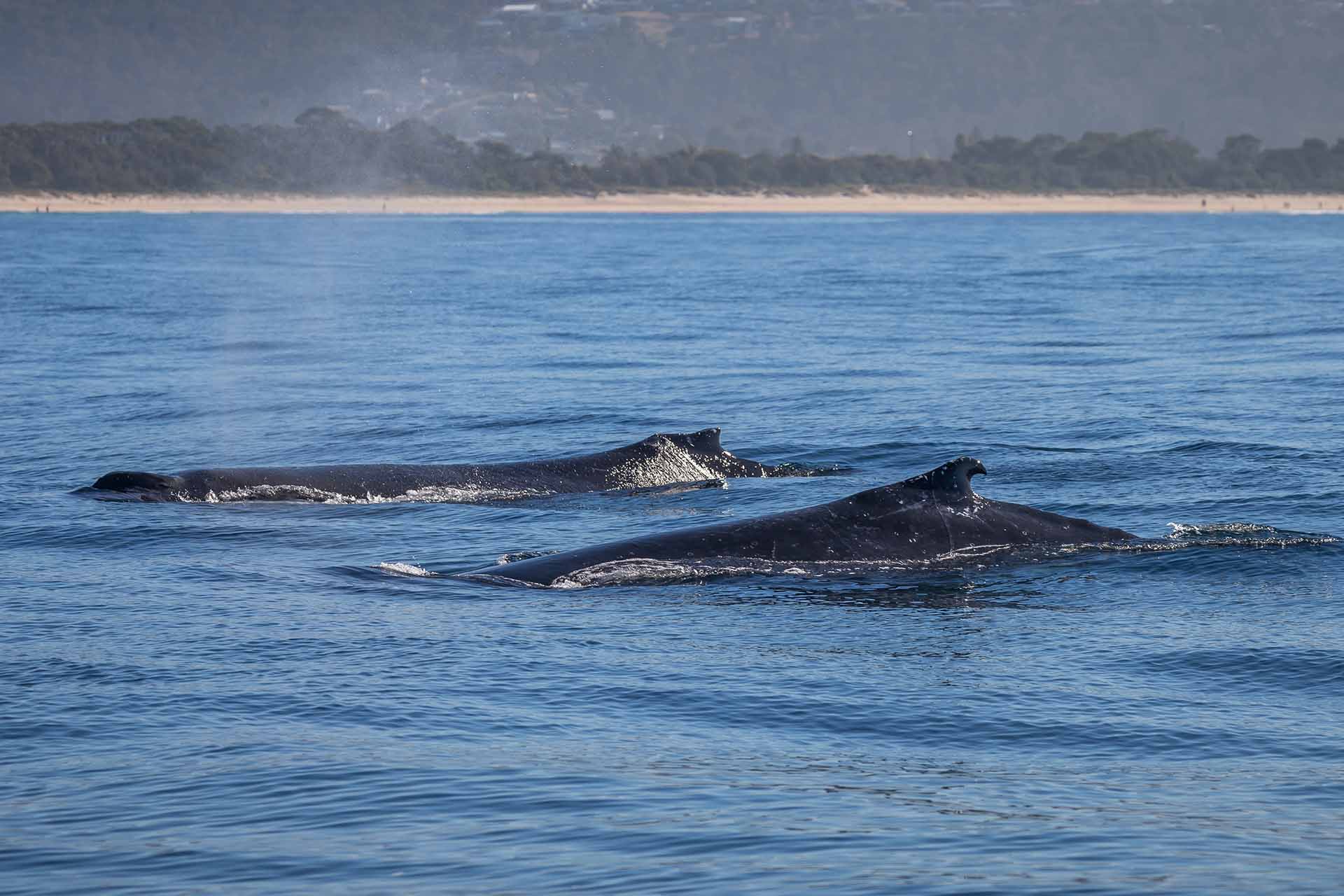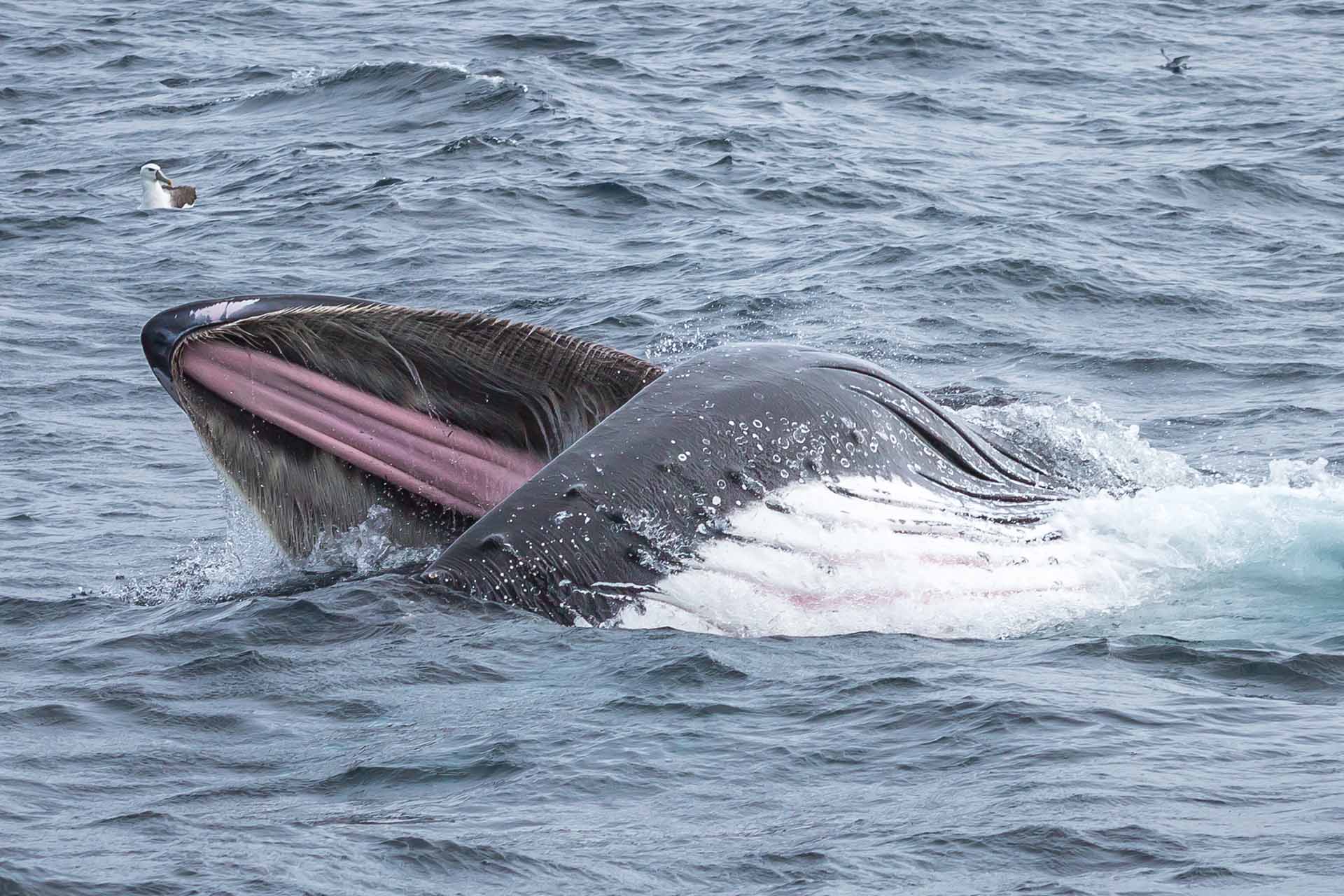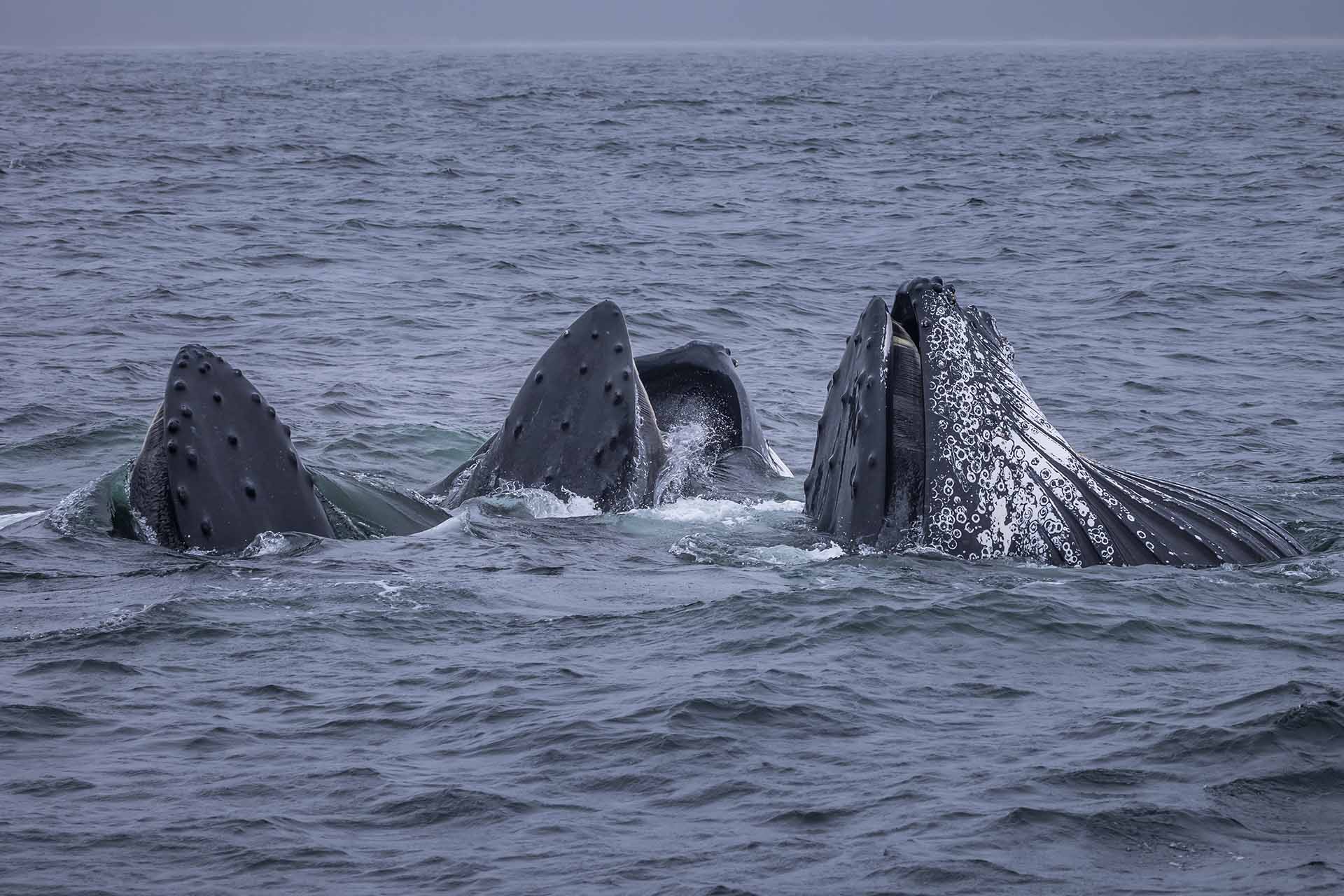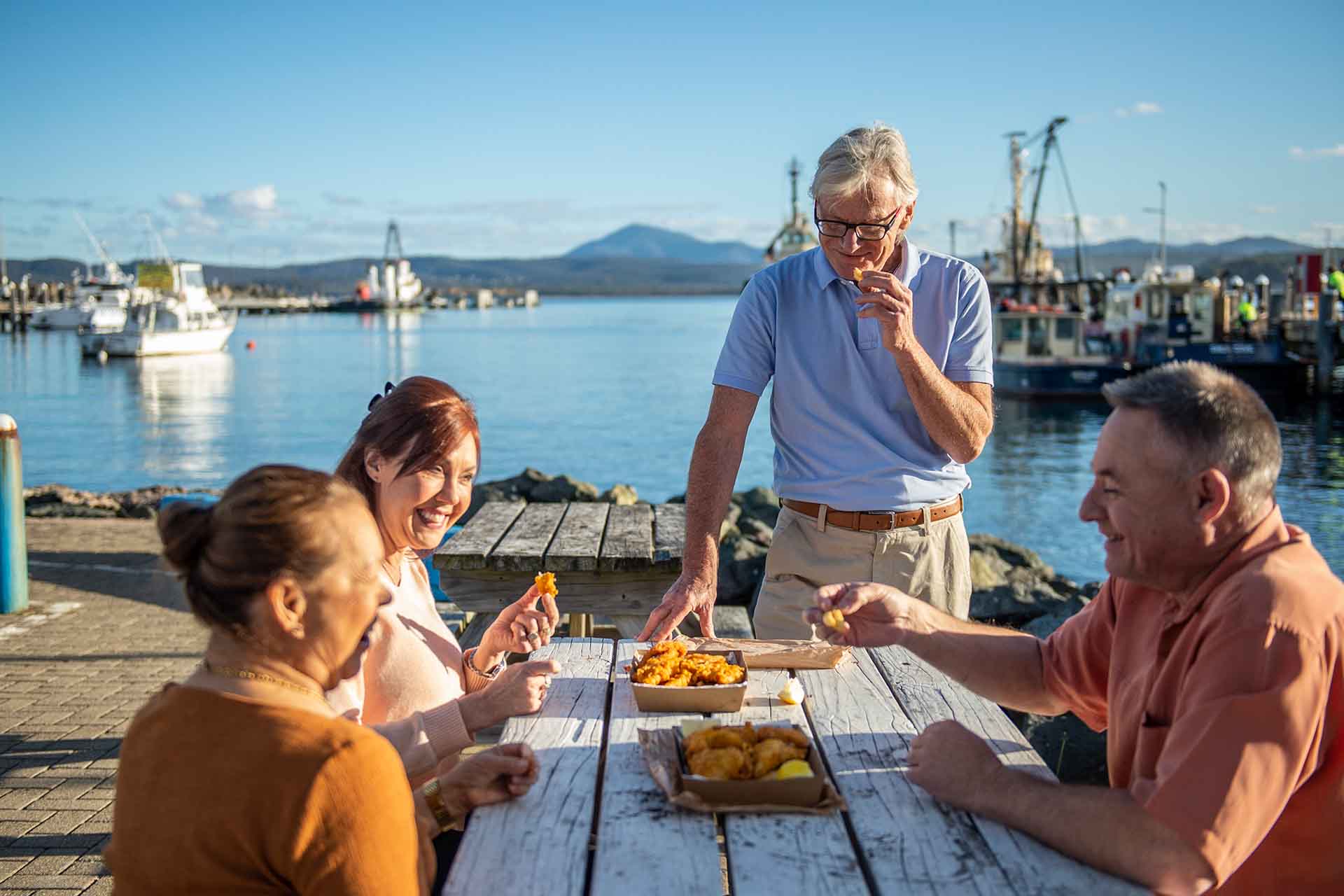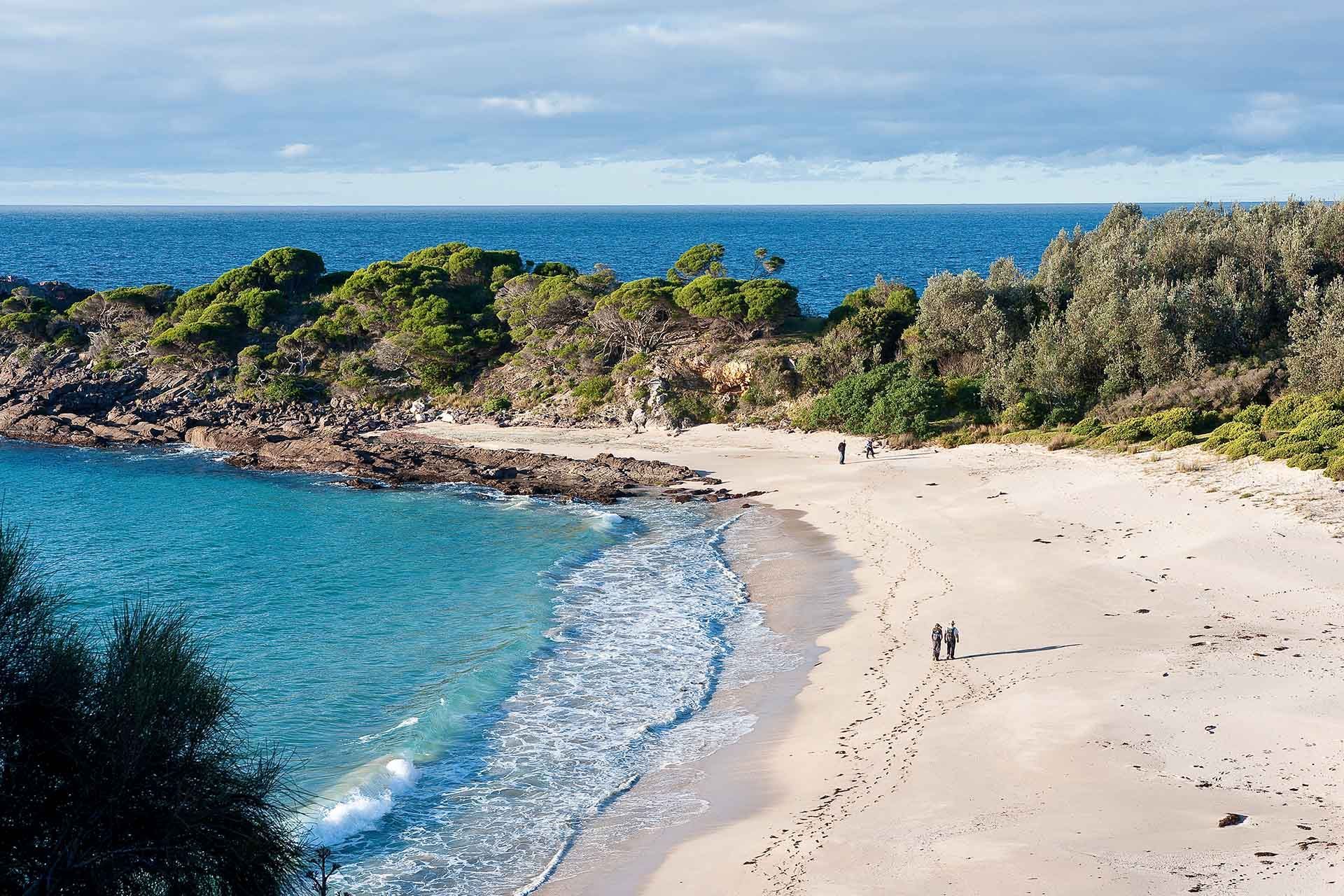Whale moves and behaviour
Humpback whale behaviours
Humpback whales are the stars of the migration spectacle on the NSW South Coast, delighting audiences with their magnificent acrobatic displays of breaching, splashing and diving. Humpback sightings along the Sapphire Coast are at their highest numbers in September and October. Feeding is more often at the beginning of the southerm migration in September, with adults and sub-adults, then mothers and calves as the season progresses.
Wherever you go looking for them, the best time is the early morning or late afternoon when the sun is low in the sky. It will light up the whale’s ‘blow’ as they surface to breathe and you are likely to get the calmest weather of the day. Dress warmly, pack a snack and get ready for some wildlife.
If you'd like a front row seat to the action, check out our amazing whale watching charters in Eden, Merimbula and Bermagui.
Don't forget to tag us in your photos!
@sapphirecoastnsw #SapphireCoastNSW #WondefullyWild
BLOW
The quickest way to spot whales and dolphins is to look for their exhalations. They may take a few breaths before lifting their tails to take a deep dive, which can mean they are about to breach. Humpback whales have been known to hold their breath for 45 minutes. A humpback’s lungs are the size of a small car so when they exhale it can reach four metres in the air. Southern right whales make a distinctive V-shaped blow, whereas dolphins have smaller and more frequent blows.
BREACH
No one really knows why whales launch so spectacularly from the water but it is known that whales breach more often on windy days. Little calves also love to play and watching them practice their moves with mum is the highlight of any outing.
MUGGING
Being held up by a whale is not uncommon on the Sapphire Coast. Mugging is when a curious whale or two come to a boat to ‘people watch’, swimming around and under the boat and even raising their heads from the water to look you in the eye. The skipper must switch off the boat’s engine and wait for the whale (or whales) to leave, much to the delight of passengers. A word of warning though, a whale’s breath is very fishy!
SPYHOPPING
A whale will raise its head and eyes above the water when it wants to take a closer look at something, usually a whale watching boat! So, who is watching who?
TAIL SLAP
A noise so loud it can wake people from their sleep at night. A whale’s tail slap is an awesome display of strength, thought to be a means of communication, defence or a hunting technique. The whale hangs vertically in the water and beats the surface with its tail, creating loud cracks and dramatic splashes.
TAIL THROW
More dramatic than a tail slap, thought to be a hunting technique or a defensive show of strength.
PEC SLAP
A humpback’s long pectoral fins are excellent clap sticks and it’s a joy to watch them float on their backs and roll from side to side as they slap the surface.
LOGGING
Whales need to rest just like us, but they also have to consciously breathe and swim. Their solution is to rest one part of their brain while the other half monitors breath and position, usually near the surface.
LUNGE FEEDING
The most common form of feeding, where whales speed towards a swarm of krill and lunge through it with their mouths wide open. They often do this on their side, giving lucky cruise passengers a rare glimpse inside a whale’s mouth.
BUBBLE-net feeding
A group effort where whales herd schools of prey into a tight formation known as a bait ball. The whales dive deep, making booming noises to frighten the prey to the surface, then as they swim back to the surface in a spiral fashion they blow bubbles, herding their prey into a ball on the surface. As they approach the ‘bait ball’, the whales open their huge mouths to take a big gulp of food.
In 2020, the Sapphire Coast received
worldwide attention when a rare super-group of humpback whales used the ‘bubble-net’ method near Merimbula. It was the first of its kind to ever be documented in Australia.
Whale Watching Etiquette
Adventuring without a guide, or flying a drone? There are clear rules to follow to protect both you and the whales while still capturing the magic of the moment. If you plan to use a drone, operate your own vessel or even dive or swim along the Humpback Highway you need to keep a safe distance and not hinder the whale’s path. Drones cannot encroach beyond a horizontal radius of 100m, for boats it is 100m or 300m when a calf is present. Check the official whale watching approach zones here.
To report injured, entangled or stranded whales please contact NSW National Parks & Wildlife Service on (02) 9895 6444 or ORRCA whale and dolphin rescue on (02) 9415 3333 (24 hours hotline).
Share

